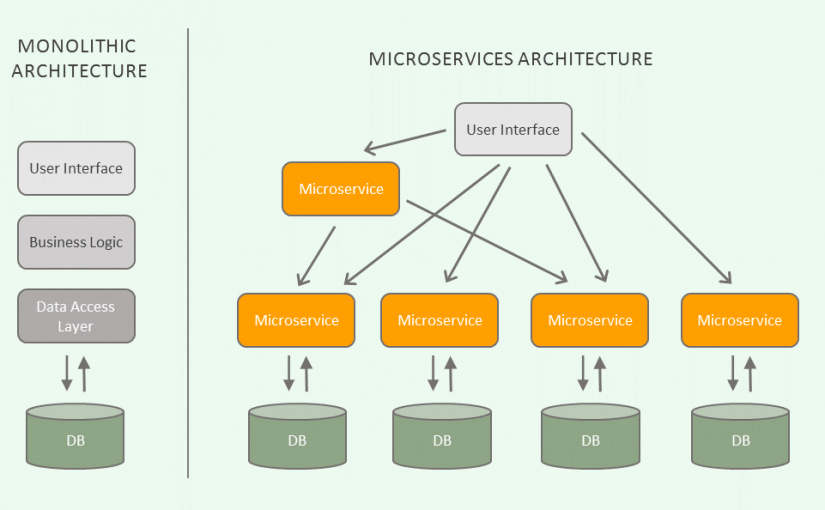- Posted on : August 21, 2018
-
- Industry : Retail
- Service : PAQman
- Type: Blog

Source: https://dzone.com/articles/what-are-microservices-actually
In the field of test engineering, microservices have been making waves in the testing community over the past year, and with good reason. With many companies investing in DevOps and favoring a more microservice-oriented framework of software development, testing practices will also need to change. Microservices will have various significant impacts on the future of testing.
Before we tackle these changes, let us define microservice. Microservices architecture is a branch of services-oriented architecture (SOA) that consists of several extremely narrowly focused services that, when brought together, function as an application. In contrast, monolithic applications are when a single application is comprised of the client access code, business logic, and the data layer combined.
The problem with monolithic applications is that when a company wants to make minor changes to a single line of code, it requires a complete overhaul of entire application. Microservices present a novel solution to this problem, because rather than redeploying all the code, an arduous and complex process, the target layer they wish to change can be altered individually.
A real story of this positive transition is the Amazon application. In 2001, the Amazon retail website was one large architectural monolith, a huge single code base and a clumsy, frankly outdated way to operate the application. In keeping with their forward-looking culture, they took the truly revolutionary approach of decoupling service architectures to simplify their pipeline and enable them to roll out updates every 11.6 seconds. This is a testament to the value of microservices and demonstrates how it is feasible for scalability, relatability, and availability. Other companies like Netflix and HelloFresh are following Amazon’s example and breaking up their apps as well.
As these development processes transform, optimal testing technology choices also change. Karate is a simple, elegant open-source tool that simplifies microservices testing and claims that the business of testing web APIs might be fun. It does this by reducing the entry barrier to writing a test, thus increasing the readability of tests and making the test easier to maintain.
Furthermore, microservices will change the methodology of testing. When you want to make a specific change a microservice, you can use stubs to isolate individual integration points of the application from each other for unit testing. This will dramatically simplify the testing process. Also, you can automate testing earlier in the process, because you won’t have to test the code that’s driving the user interface and experience, absolving you of onerous, manual, often subjective evaluation of these components. On the other hand, testing microservice architecture poses a unique challenge that did not really exist with monoliths: when running software tests on a microservice, you need to ensure that not only that specific microservice performs as expected, but also that all the microservices that compose an application behave harmoniously as they were intended.
In summary, as teams adopt microservices, companies will observe significant simplifications in the way in which testing takes place. Infogain’s testing team provides microservices-based testing for Fortune 100 companies and is a world leader in automated, cognitive-automation-driven automation testing.
Vikas Mittal | Head – Testing Expert Centers and Solution Delivery
https://www.infogain.com/digital-transformation/







